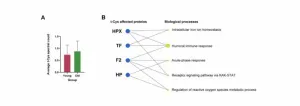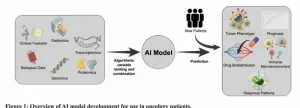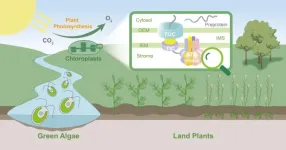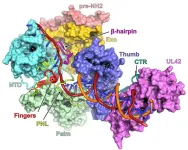Colleen McDonald
Sr. Consultant, Earned Media
Kara Reed
Director of Development
Lisa Babin
Executive Director of Communications
Medical College of Wisconsin
University of California San Diego
LSU Health Shreveport
414.801.3146 | cmcdonald@mcw.edu
217.390.6629 | k3hendrickson@ucsd.edu
318.675.8769 | lisa.babin@lsuhs.edu
Milwaukee, Wis., August 27, 2024 – John McCorvy, PhD, Assistant Professor in the Department of Cell Biology, Neurobiology, and Anatomy at the Medical College of Wisconsin (MCW); Adam Halberstadt, PhD, Professor of Psychiatry at the University of California San Diego (UCSD) and Director of the UCSD Center for Psychedelic Research; and Kevin Murnane, PhD, Associate Professor of Pharmacology, Toxicology, and Neuroscience and Director of Basic Science Research for the Louisiana Addiction Research Center at LSU Health Shreveport, were recently awarded a five-year, $2.4 million research grant from the National Institute on Drug Abuse (NIDA), part of the National Institutes of Health (NIH), to uncover critical insights into how psychedelics could be used as a therapeutic to treat methamphetamine addiction.
Stimulant use disorder and methamphetamine-related overdose deaths are escalating at an alarming rate. According to data from NIDA, the number of overdose deaths in the United States involving psychostimulants (primarily methamphetamine) has grown significantly since 2015 when there were 5,716 attributed deaths. In 2022, NIDA reported 34,022 overdose deaths involving psychostimulants – a nearly 500% increase from 2015 to 2022.
Psychedelic substances, like psilocybin, have shown promise in treating a wide range of behavioral health conditions, including anxiety, depression, alcoholism, and nicotine dependence. However, these substances interact with multiple receptors and are not specifically selective for the serotonin 5-HT2A receptor, which is vital for their psychoactive effects. The research spearheaded by Drs. McCorvy (MCW), Halberstadt (UCSD), and Murnane (LSU) seeks to understand the specific role of 5-HT2A receptor signaling in mitigating the effects of methamphetamine use.
“There are currently no pharmacological treatments for methamphetamine addiction. Our research aims to unravel the precise mechanisms through which psychedelics influence the 5-HT2A receptor – understanding that could lead to lessening their psychoactive effect and open the door to new treatments,” said Dr. McCorvy. “This project’s findings could ultimately pave the way for new therapeutic approaches to treat stimulant use disorder, impacting the lives of so many who are coping with addiction.”
The significance of this research extends beyond the immediate goal of finding new treatments for methamphetamine addiction. Understanding which serotonin receptors facilitate the beneficial effects of psychedelics can pave the way for developing targeted therapies that minimize psychedelic effects, potentially allowing for daily or regular use without impairing the patient’s daily life.
As Dr. Halberstadt noted, “Psychedelics appear to have significant therapeutic activity against different types of substance abuse and other psychiatric disorders. However, existing psychedelics induce intensive psychoactive effects and can also induce side-effects in some individuals, complicating the clinical use of these substances and restricting their widespread application. Our project seeks to understand the mechanism for the therapeutic effects of psychedelics against methamphetamine addition, potentially enabling development of a new generation of molecules with effects that are much more manageable and better tolerated.”
As Dr. Murnane noted, “For methamphetamine addiction, the current standard of care involves behavioral treatments with limited success rates over multiple cycles of therapy. This creates a public health imperative to research new and deliver effective therapies for methamphetamine addiction. This research project will advance psychedelics as a promising new treatment option based on reported data in initial clinical studies, as well as our own preliminary research. It will also unlock understanding into key physiological mechanisms that drive methamphetamine addiction, as well as therapeutic response mechanisms, allowing the development of second-generation serotonin agents with improved profiles.”
NIDA recently solicited grant applications for innovative research projects that employ psychedelics for drug addiction. This project – Investigations into 5-HT2A signaling mechanisms of psychedelic drugs for the treatment of stimulant use disorder – was one of only two non-clinical trial grant applications selected for funding by NIDA.
“We’re thrilled to receive this first-of-its-kind funding from NIDA to conduct such unique and innovative research. It not only validates our approach to studying psychedelics but highlights the urgent need for new treatments for methamphetamine addiction,” said Dr. McCorvy. “Our goal is to leverage cutting-edge chemical biology tools to unravel the specific mechanisms by which psychedelics exert their effects, potentially leading to novel therapies that can significantly impact public health.”
This research is timely and crucial given the alarming rates of methamphetamine overdoses, especially in the southern and western United States where methamphetamine was the most common drug in overdose deaths in 2017, surpassing those from opioid overdoses. The study’s findings could lead to novel, effective treatments for a problem that has long lacked viable medical solutions.
NOTE: Drs. McCorvy, Halberstadt, and Murnane are available for interviews. Please contact the press office for their respective institutions to schedule: MCW – media@mcw.edu; UCSD – k3hendrickson@ucsd.edu; LSUHS – lisa.babin@lsuhs.edu.
# # #
About the Medical College of Wisconsin
With a history dating back to 1893, the Medical College of Wisconsin is dedicated to leadership and excellence in education, patient care, research and community engagement. More than 1,600 students are enrolled in MCW’s medical, graduate and pharmacy schools at campuses in Milwaukee, Green Bay and Central Wisconsin. MCW’s School of Pharmacy opened in 2017. A major national research center, MCW ranks in the top 1% of U.S. research institutions (National Science Foundation), is the largest research institution in the Milwaukee metro area and is the largest private research institution in Wisconsin. Annually, our faculty direct or collaborate on more than 3,500 research studies, including clinical trials. In the last 10 years, MCW faculty have received nearly $2 billion in external support for research, teaching, training and related purposes. Additionally, our more than 1,700 physicians provide care in virtually every specialty of medicine, annually fulfilling more than 4 million patient visits.
About the University of California San Diego
UC San Diego is recognized as one of the top 20 research universities in the world and received more than $460 million in NIH grants in 2023. UCSD includes six undergraduate residential colleges, two professional medical schools (UCSD School of Medicine and Skaggs School of Pharmacy and Pharmaceutical Sciences), the Scripps Institution of Oceanography, the Qualcomm Institute, the San Diego Supercomputer Center, and the Kavli Institute for Brain and Mind. It offers over 200 undergraduate and graduate degree programs, enrolling more than 20,000 undergraduate students and more than 6,000 graduate and professional students.
About Louisiana State University Health Shreveport
LSU Health Shreveport is one of two health sciences centers of the Louisiana State University (LSU) System and home to the only academic medical center in a 150-mile radius. The primary mission of LSU Health Shreveport is to teach, heal, and discover in order to advance the well-being of the state, region and beyond. LSU Health Shreveport encompasses the School of Medicine, School of Graduate Studies and School of Allied Health Professions, Graduate Medical Education (GME), and a robust research enterprise. For more information, visit www.lsuhs.edu.
END






